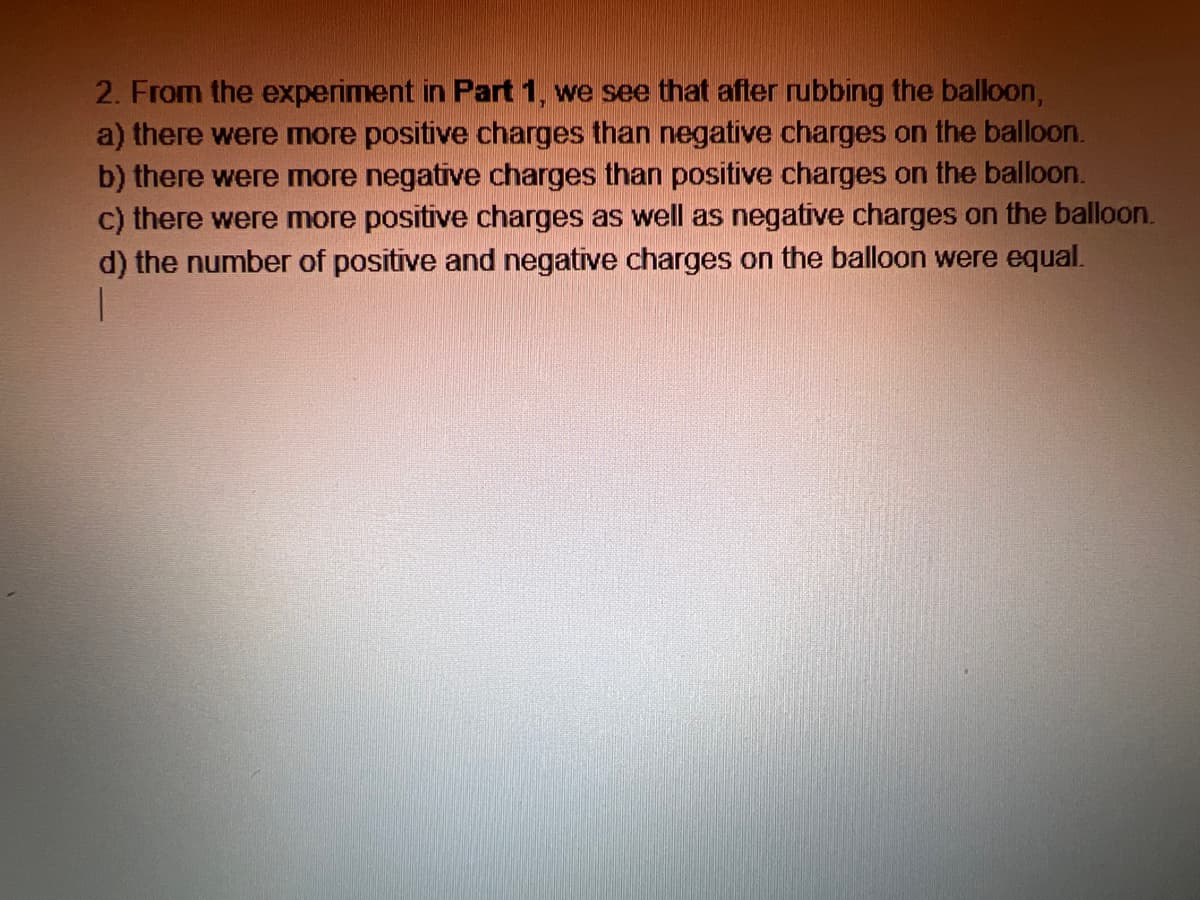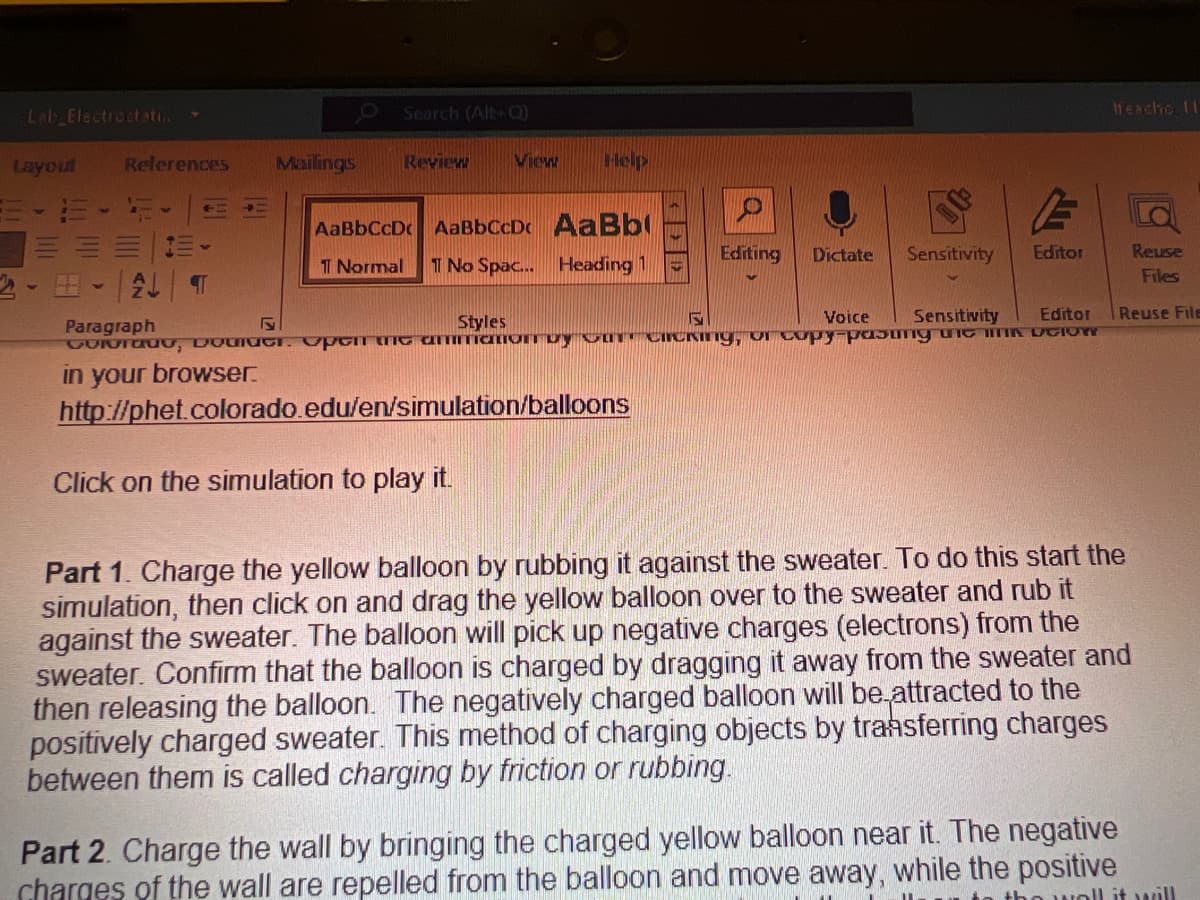2. From the experiment in Part 1, we see that after rubbing the balloon, a) there were more positive charges than negative charges on the balloon. b) there were more negative charges than positive charges on the balloon. c) there were more positive charges as well as negative charges on the balloon. d) the number of positive and negative charges on the balloon were equal. 1
2. From the experiment in Part 1, we see that after rubbing the balloon, a) there were more positive charges than negative charges on the balloon. b) there were more negative charges than positive charges on the balloon. c) there were more positive charges as well as negative charges on the balloon. d) the number of positive and negative charges on the balloon were equal. 1
Chapter11: Combined Structure Problems
Section: Chapter Questions
Problem 25P
Related questions
Question
2

Transcribed Image Text:2. From the experiment in Part 1, we see that after rubbing the balloon,
a) there were more positive charges than negative charges on the balloon.
b) there were more negative charges than positive charges on the balloon.
c) there were more positive charges as well as negative charges on the balloon.
d) the number of positive and negative charges on the balloon were equal.

Transcribed Image Text:Lab Electrostati...
Layout
References
T
ALT
Mailings
Search (Alt+Q)
Review
View
Help
AaBbCcDc AaBbCcDc AaBb
T Normal 1 No Spac... Heading 1
Editing Dictate Sensitivity
Voice
S
Sensitivity
S
Paragraph
Styles
Colorado, Dodici. Open the ammation by OUT CHICKing, or copy-pasang wie in
in your browser.
http://phet.colorado.edu/en/simulation/balloons
Click on the simulation to play it.
E
Editor
Editor
DelON
Ifeacho 11
Reuse
Files
Reuse File
Part 1. Charge the yellow balloon by rubbing it against the sweater. To do this start the
simulation, then click on and drag the yellow balloon over to the sweater and rub it
against the sweater. The balloon will pick up negative charges (electrons) from the
sweater. Confirm that the balloon is charged by dragging it away from the sweater and
then releasing the balloon. The negatively charged balloon will be attracted to the
positively charged sweater. This method of charging objects by transferring charges
between them is called charging by friction or rubbing.
Part 2. Charge the wall by bringing the charged yellow balloon near it. The negative
charges of the wall are repelled from the balloon and move away, while the positive
no well it will
Expert Solution
This question has been solved!
Explore an expertly crafted, step-by-step solution for a thorough understanding of key concepts.
This is a popular solution!
Trending now
This is a popular solution!
Step by step
Solved in 2 steps with 2 images

Knowledge Booster
Learn more about
Need a deep-dive on the concept behind this application? Look no further. Learn more about this topic, physics and related others by exploring similar questions and additional content below.Recommended textbooks for you



